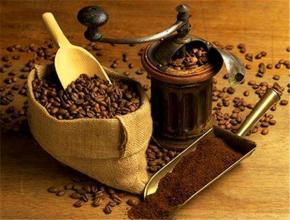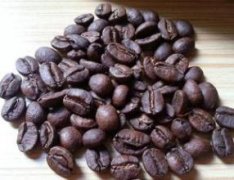Costa Rican coffee bean flavor description taste treatment grinding scale varieties
All coffee is grown in the tropics. In fact, altitude has no direct effect on coffee, but altitude can affect the growth and quality of coffee through the redistribution of meteorological factors (temperature, light, heat, wind speed, rainfall, etc.).
The tropics between the Tropics produce the world's best Arabica coffee. Central and South America, South Asia and some Pacific islands, South Central Africa are also the most important coffee growing regions in the world.
3000-6000 The altitude of 900-2000 m provides ideal conditions for coffee growing: frost-free weather averaging 60-70 F (15-21 C) year-round, moderate rainfall of about 80 inches, and plenty of sunshine. Coffee beans in cooler mountains grow slower, and the slower ripening process makes coffee beans higher in sugar, more interesting in flavor, and more mellow.
Higher elevations have higher drainage, produce more concentrated fruit flavors, and the best Arabica coffee growing areas have very fertile soils, often in volcanic areas.
Coffee beans grown at high altitudes are hard and dense and have the potential to develop special flavors. At high altitudes, these beans are carefully picked one after another only during the ripening season. In general, coffee aromas become more prominent and distinctive with elevation (see photo). From the mild sweetness of Brazilian beans at low altitudes of 3500 feet to Ethiopian coffee beans at altitudes above 6000 feet, the taste of coffee beans soars. Elevation can make coffee beans better play complex and subtle taste.
Country of origin: Costa Rica
Region: ** Central Valley
Breeds: Caturra,Catuai
Altitude: 1500-1800 Meters
Treatment: Sunlight Natural
Flavor description: Passion fruit, stone fruit, dates, blueberries

Important Notice :
前街咖啡 FrontStreet Coffee has moved to new addredd:
FrontStreet Coffee Address: 315,Donghua East Road,GuangZhou
Tel:020 38364473
- Prev

Introduction to the story of the flavor description of the roast degree of coffee beans in Latin America
Latin American coffee beans characteristic roasting degree flavor description before the introduction to the growth conditions are relatively high, and more delicate, but of good quality, containing 1% of the unit weight of caffeine. The latter is much stronger than the strong, with low environmental requirements, low altitude, cold resistance and even can prevent their own virus, but the taste is more astringent, the coffee contained.
- Next

Indian Coffee: monsoon Coffee with Ocean Flavor
When I drank Indian coffee for the first time, a friend told me that it was a kind of coffee with ocean flavor, because Indian coffee beans were dried by salty sea breeze. Five or six people tasted the coffee together, and after a sip, they closed their eyes and were intoxicated one after another. when they opened their eyes, they said it was true with sly smiles. It's just an imagination, not a drink.
Related
- What documents do you need to go through to open a coffee shop? coffee shop coffee shop certificate processing process
- How to purchase Coffee beans in small Cafe how to choose a suitable supplier for domestic Coffee supply Company
- How to drink Starbucks Fragrance White Coffee? how to make Australian White Coffee? what Italian coffee beans are recommended?
- The Story of Flora Coffee: the name of Flora Coffee Bean and the implication of the Flowers on Florna Coffee
- How much does a cup of coffee cost? How much is the profit of a cup of coffee? What is the profit of the coffee shop in a year?
- Yunnan small Coffee, known as "fragrant Coffee", introduces the characteristics of Alpine Arabica Coffee producing areas in Yunnan, China
- 2023 latest Starbucks full menu price list how much is a cup of Starbucks coffee what is better to drink the most popular hot and cold drinks recommended
- Starbucks different kinds of Coffee Price list Starbucks menu 2023 Top Ten Best drinks in Starbucks
- Starbucks Spring praise Comprehensive matching Coffee Bean theme Story Packaging implication and taste description
- The cost of a cup of coffee latte American coffee cost price and selling price

